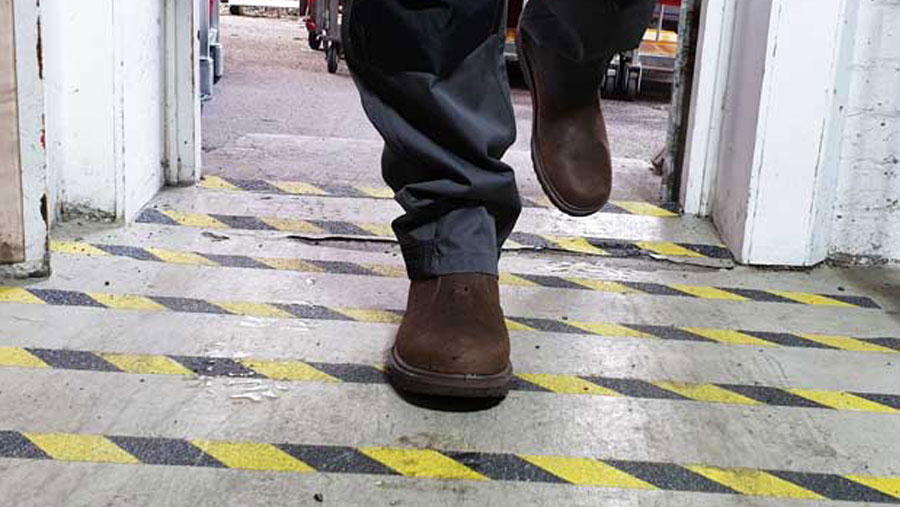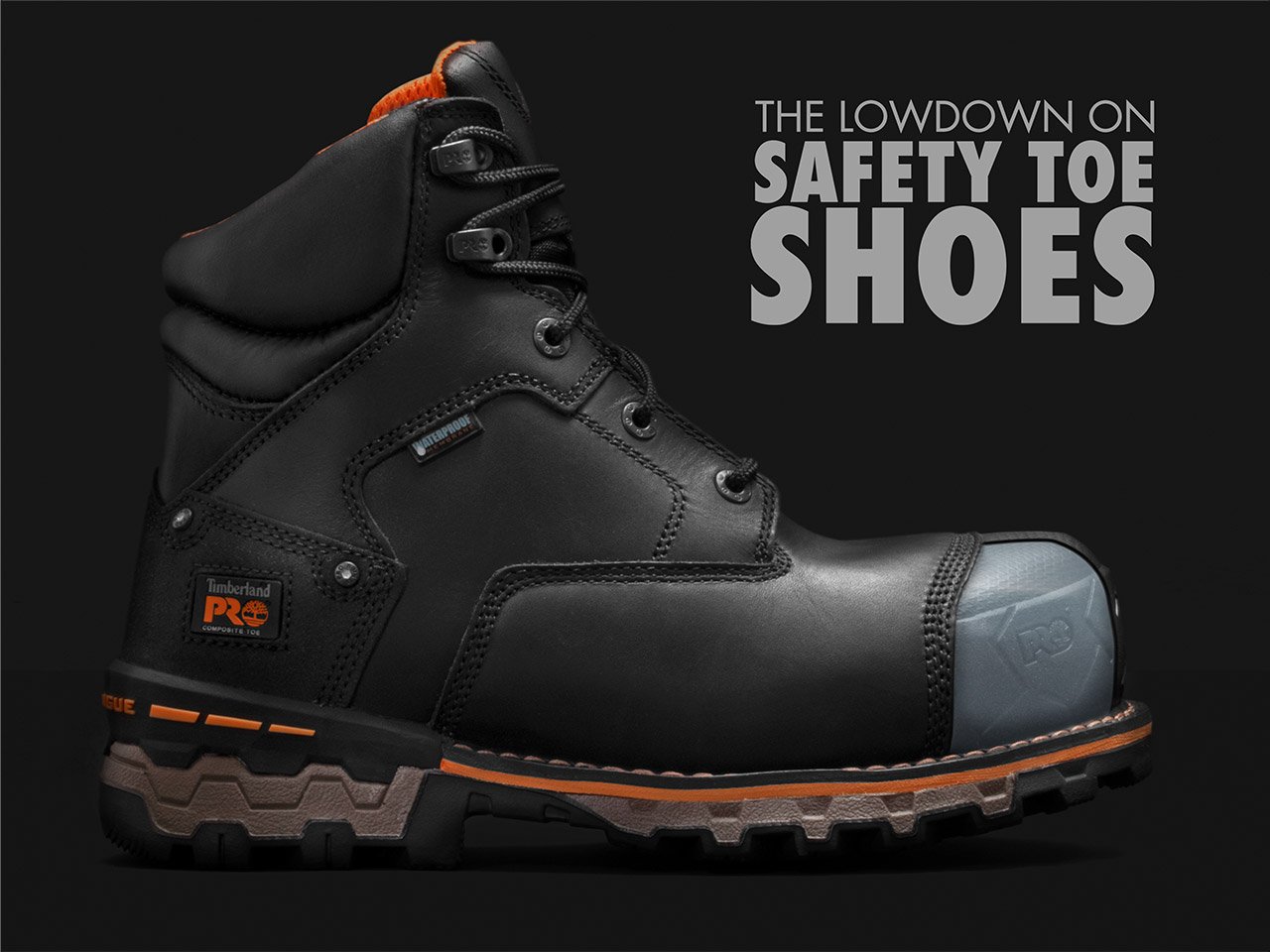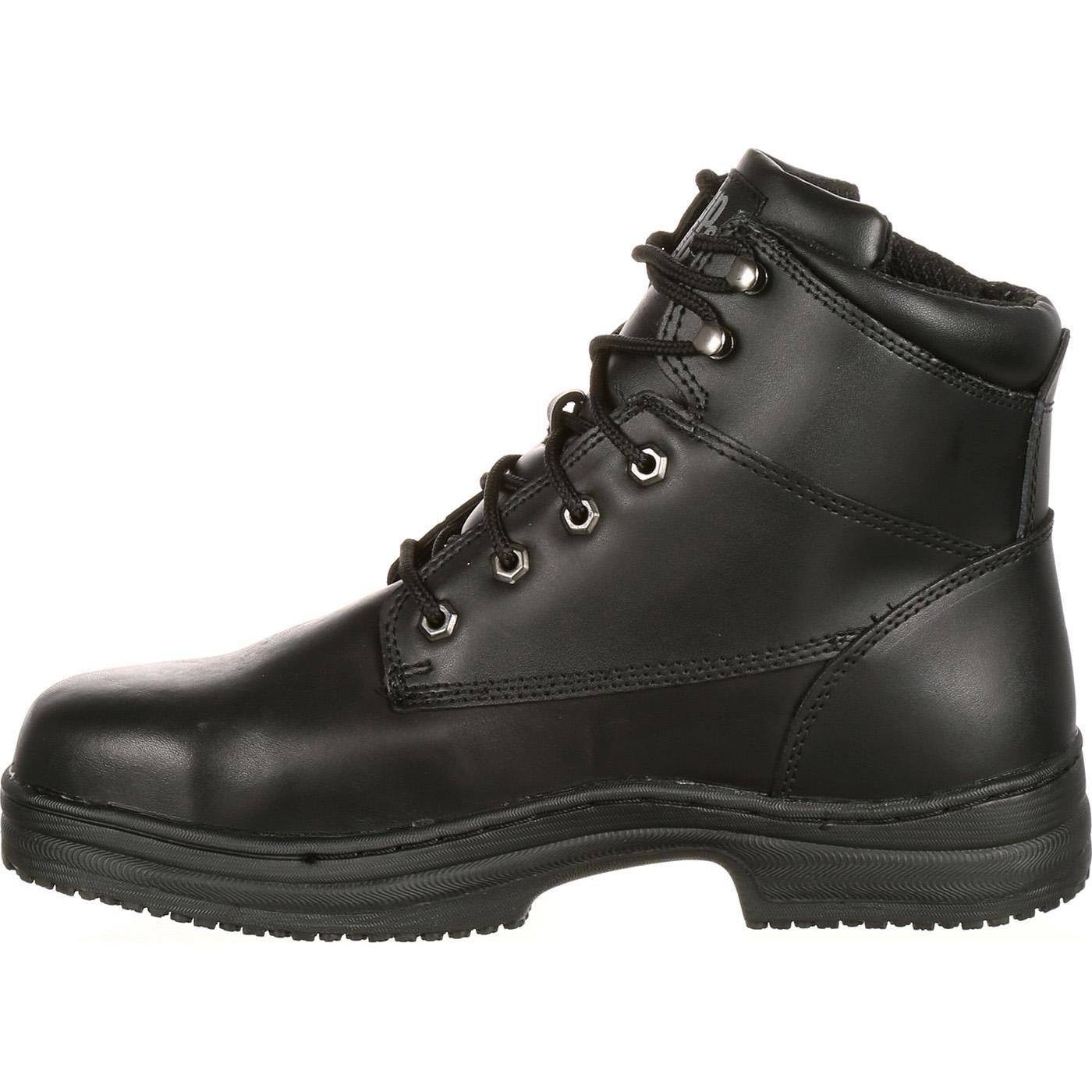Why Slip-Resistant Steel Toe Boots Are a Must-Have for Workers
In various industries, slips, trips, and falls are a common occurrence that can lead to serious injuries and even fatalities. According to the Occupational Safety and Health Administration (OSHA), slips, trips, and falls are the leading cause of workplace accidents, resulting in thousands of injuries and hundreds of deaths every year. One of the most effective ways to prevent these accidents is by wearing slip-resistant steel toe boots. These boots are designed to provide traction on various surfaces, reducing the risk of slips and falls.
Workers in industries such as construction, manufacturing, and healthcare are at a higher risk of slips and falls due to the hazardous nature of their work environments. Slip-resistant steel toe boots can help mitigate this risk by providing a secure footing on slippery surfaces. In addition, these boots can also protect workers from other hazards such as heavy objects, sharp edges, and extreme temperatures.
The benefits of wearing slip-resistant steel toe boots extend beyond just safety. They can also improve worker productivity and morale. When workers feel safe and confident in their footwear, they are more likely to be focused and productive on the job. This can lead to increased efficiency and better overall performance.
Furthermore, many employers are now requiring workers to wear slip-resistant steel toe boots as part of their personal protective equipment (PPE). This is because these boots have been proven to be an effective way to reduce the risk of workplace accidents and injuries.
What Makes a Boot Slip-Resistant: Understanding the Technology
Slip-resistant steel toe boots are designed to provide traction on various surfaces, reducing the risk of slips and falls. But what makes them slip-resistant? The answer lies in the technology used to create the boots’ soles. There are several types of slip-resistant technologies used in steel toe boots, each with its own unique features and benefits.
One of the most common types of slip-resistant technology is the lug sole. Lug soles feature deep grooves and treads that provide excellent traction on slippery surfaces. The lugs are designed to dig into the surface, providing a secure footing even on oily or wet floors. Another type of slip-resistant technology is the tread sole, which features a series of small, raised patterns on the sole. These patterns provide traction by increasing the surface area in contact with the ground.
Some slip-resistant steel toe boots also feature coatings or treatments that enhance their traction. For example, some boots may have a silicone-based coating that provides extra grip on slippery surfaces. Others may have a textured finish that helps to increase traction. These coatings and treatments can be especially useful in industries where workers are exposed to hazardous materials or extreme temperatures.
In addition to these technologies, some slip-resistant steel toe boots may also feature specialized materials or designs that enhance their traction. For example, some boots may have a unique sole design that channels liquids away from the foot, reducing the risk of slipping. Others may feature a specialized rubber compound that provides extra grip on slippery surfaces.
By understanding the different types of slip-resistant technologies used in steel toe boots, workers can make informed decisions about which boots are best for their specific needs. Whether you work in construction, manufacturing, or healthcare, there’s a slip-resistant steel toe boot out there that can help you stay safe and productive on the job.
How to Choose the Right Slip-Resistant Steel Toe Boots for Your Job
With so many options available, choosing the right slip-resistant steel toe boots for your job can be overwhelming. However, by considering a few key factors, you can make an informed decision that will keep you safe and productive on the job.
First, consider the terrain you’ll be working on. If you’ll be working on rough or uneven surfaces, look for boots with deep lugs or aggressive tread patterns to provide extra traction. If you’ll be working on smooth surfaces, such as factory floors or hospital corridors, a boot with a smoother sole may be sufficient.
Next, think about the weather conditions you’ll be working in. If you’ll be working outdoors in wet or icy conditions, look for boots with specialized coatings or treatments that provide extra grip on slippery surfaces. If you’ll be working in hot or dry conditions, look for boots with breathable materials and moisture-wicking properties to keep your feet cool and dry.
Personal comfort is also an important consideration. Look for boots with cushioning, arch support, and a comfortable fit to reduce fatigue and discomfort during long shifts. Additionally, consider the weight and flexibility of the boots, as well as any features that may enhance comfort, such as padded collars or breathable linings.
Finally, consider the specific hazards and risks associated with your job. If you’ll be working with hazardous materials or in areas with high electrical risks, look for boots with specialized features such as chemical resistance or electrical hazard protection.
By considering these factors, you can choose the right slip-resistant steel toe boots for your job, providing you with the protection, comfort, and confidence you need to perform at your best.
Top-Rated Slip-Resistant Steel Toe Boots for Different Industries
When it comes to choosing the right slip-resistant steel toe boots for your job, it’s essential to consider the specific demands of your industry. Here, we’ll review and compare top-rated slip-resistant steel toe boots for various industries, highlighting their features, pros, and cons.
Construction: The Timberland PRO Boondock Slip-Resistant Steel Toe Boot is a top choice for construction workers. With its rugged outsole and aggressive tread pattern, it provides excellent traction on rough terrain. The boot also features a breathable membrane and anti-fatigue technology for added comfort.
Manufacturing: The Dr. Martens Ironbridge Slip-Resistant Steel Toe Boot is a popular choice for manufacturing workers. Its air-cushioned sole and slip-resistant tread provide excellent traction on smooth floors, while its breathable leather upper keeps feet cool and dry.
Healthcare: The New Balance 623 Slip-Resistant Steel Toe Boot is a top pick for healthcare workers. Its slip-resistant outsole and comfortable design make it ideal for long shifts on hospital floors. The boot also features a breathable mesh upper and a supportive toe cap for added protection.
Oil and Gas: The Thorogood American Made Slip-Resistant Steel Toe Boot is a top choice for oil and gas workers. Its rugged outsole and aggressive tread pattern provide excellent traction on rough terrain, while its waterproof membrane and breathable lining keep feet dry and comfortable.
When choosing a slip-resistant steel toe boot, it’s essential to consider the specific demands of your industry and job role. By selecting a boot that meets your unique needs, you can ensure maximum safety and performance on the job.
The Importance of Proper Fit and Maintenance for Slip-Resistant Boots
While slip-resistant steel toe boots are designed to provide superior traction and protection, their effectiveness can be compromised if they don’t fit properly or are not maintained regularly. In this section, we’ll discuss the importance of proper fit and maintenance for slip-resistant steel toe boots, and provide tips on how to break them in, clean them, and extend their lifespan.
Proper Fit: A proper fit is essential for slip-resistant steel toe boots to function effectively. Boots that are too loose or too tight can compromise the traction and stability of the foot, increasing the risk of slips, trips, and falls. When trying on slip-resistant steel toe boots, make sure to wear the same type of socks you plan to wear on the job, and walk around to ensure a comfortable fit.
Breaking In: Breaking in slip-resistant steel toe boots can take some time, but it’s essential to ensure a comfortable fit and prevent blisters. Start by wearing the boots for short periods, gradually increasing the time over several days. Apply moisturizer to the leather upper to soften it, and use a shoe stretcher to stretch the boot if necessary.
Cleaning and Maintenance: Regular cleaning and maintenance are crucial to extend the lifespan of slip-resistant steel toe boots. Remove dirt and debris from the boots using a soft brush and mild soap, and dry them thoroughly to prevent water spots. Apply a waterproofing treatment to the leather upper to protect it from the elements, and use a slip-resistant coating to maintain the traction of the sole.
By following these tips, you can ensure that your slip-resistant steel toe boots fit comfortably, function effectively, and provide maximum protection and traction on the job. Remember, a good pair of slip-resistant steel toe boots is an investment in your safety and productivity, and proper fit and maintenance are essential to get the most out of them.
Slip-Resistant Steel Toe Boots vs. Regular Steel Toe Boots: What’s the Difference?
When it comes to choosing the right footwear for the job, workers often wonder whether to opt for slip-resistant steel toe boots or regular steel toe boots. While both types of boots provide protection for the feet, there are significant differences between them. In this section, we’ll explore the benefits and drawbacks of each, and help you decide which one is right for your job.
Regular Steel Toe Boots: Regular steel toe boots are designed to provide protection for the toes from heavy objects and compression. They typically feature a steel toe cap and a rugged outsole, but may not have the same level of traction as slip-resistant steel toe boots. While they are suitable for many industries, they may not be the best choice for workers who need to navigate slippery or uneven surfaces.
Slip-Resistant Steel Toe Boots: Slip-resistant steel toe boots, on the other hand, are designed to provide both protection and traction. They feature specialized outsoles with lugs, treads, or coatings that provide superior grip on various surfaces, reducing the risk of slips, trips, and falls. Slip-resistant steel toe boots are ideal for workers in industries such as construction, manufacturing, and healthcare, where slippery surfaces are common.
Key Differences: The main difference between slip-resistant steel toe boots and regular steel toe boots is the level of traction they provide. Slip-resistant steel toe boots are designed to provide superior grip on slippery surfaces, while regular steel toe boots may not have the same level of traction. Additionally, slip-resistant steel toe boots may be more expensive than regular steel toe boots, but they provide a higher level of protection and safety.
Ultimately, the choice between slip-resistant steel toe boots and regular steel toe boots depends on the specific demands of your job. If you work in an industry where slippery surfaces are common, slip-resistant steel toe boots are the better choice. However, if you work in an industry where protection from heavy objects is the primary concern, regular steel toe boots may be sufficient. By understanding the differences between these two types of boots, you can make an informed decision and choose the right footwear for your job.
Real-Life Examples of Slip-Resistant Steel Toe Boots in Action
In the real world, slip-resistant steel toe boots have made a significant impact on the safety and productivity of workers across various industries. Here are some real-life examples of workers who have benefited from wearing slip-resistant steel toe boots:
Case Study 1: Construction Worker – John, a construction worker, was tasked with working on a slippery rooftop. He wore a pair of slip-resistant steel toe boots with a specialized outsole that provided superior grip on the wet surface. As a result, he was able to complete the job without incident, and his employer reported a significant reduction in workplace accidents.
Case Study 2: Manufacturing Plant Worker – Maria, a worker at a manufacturing plant, was responsible for operating heavy machinery on a slippery factory floor. She wore a pair of slip-resistant steel toe boots with a unique tread pattern that provided traction on the oily surface. As a result, she was able to work safely and efficiently, and her employer reported a significant increase in productivity.
Case Study 3: Healthcare Worker – David, a nurse, worked in a hospital where slippery floors were a common hazard. He wore a pair of slip-resistant steel toe boots with a slip-resistant coating that provided traction on the wet floors. As a result, he was able to move quickly and safely around the hospital, and his employer reported a significant reduction in workplace accidents.
These real-life examples demonstrate the impact that slip-resistant steel toe boots can have on the safety and productivity of workers. By investing in high-quality footwear, employers can reduce the risk of workplace accidents, improve worker morale, and increase productivity. Whether you’re working in construction, manufacturing, healthcare, or any other industry, slip-resistant steel toe boots are an essential tool for getting the job done safely and efficiently.
Conclusion: Step Up Your Safety with Slip-Resistant Steel Toe Boots
In conclusion, slip-resistant steel toe boots are an essential component of a worker’s safety arsenal. By understanding the importance of slip-resistant footwear, the technology behind it, and how to choose the right boots for your job, you can significantly reduce the risk of slips, trips, and falls in the workplace. Whether you’re working in construction, manufacturing, healthcare, or any other industry, investing in high-quality slip-resistant steel toe boots can have a profound impact on your safety and productivity.
Remember, slip-resistant steel toe boots are not just a necessary evil, but a vital tool for getting the job done safely and efficiently. By prioritizing your safety and investing in the right footwear, you can avoid costly accidents, reduce downtime, and improve your overall performance. So, step up your safety game with slip-resistant steel toe boots and experience the difference for yourself.
With the right knowledge and the right footwear, you can conquer any workplace hazard and come out on top. So, don’t wait any longer – invest in slip-resistant steel toe boots today and start reaping the benefits of improved safety and performance. Your safety is worth it, and so is your productivity.




